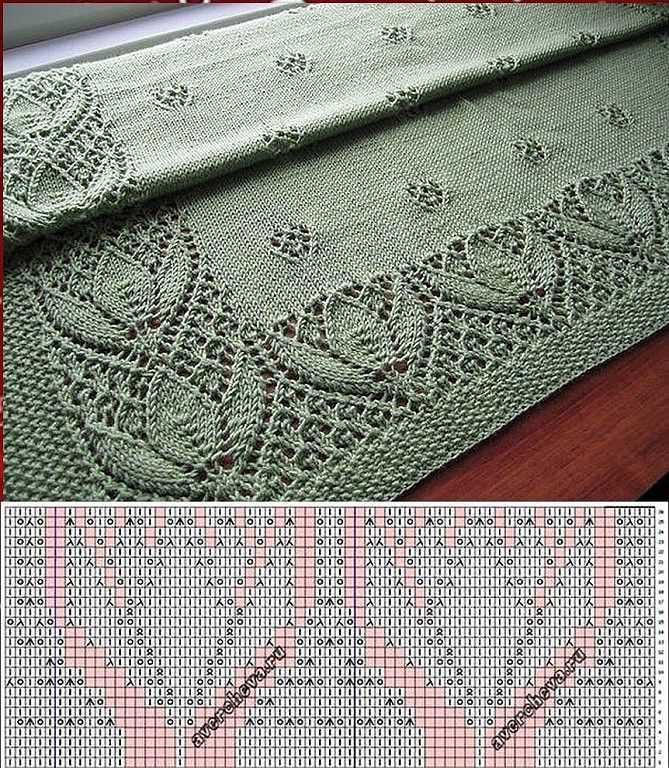
Flemish block lace knitting is a traditional knitting technique that originated in Flanders, Belgium. It is characterized by its intricate block patterns and delicate lacework. This technique has been passed down through generations, and is still popular today among knitters around the world.
The Flemish block lace knitting pattern consists of a series of small squares or blocks, each filled with different lace stitches. These blocks are then joined together to create a stunning overall pattern. The combination of the intricate lacework and the geometric shapes of the blocks creates a beautiful and unique finished piece.
This knitting technique requires a certain level of skill and patience, as it involves working with fine yarn and using intricate lace stitches. However, with practice and dedication, knitters can create stunning pieces using the Flemish block lace knitting pattern.
Whether you are a seasoned knitter or just starting out, the Flemish block lace knitting pattern offers a unique and beautiful way to create stunning lacework. With its origins in Belgium and its popularity around the world, this technique continues to captivate knitters and produce gorgeous results.
Flemish Block Lace Knitting Pattern: A Step-by-Step Guide to Creating Beautiful Lace Designs
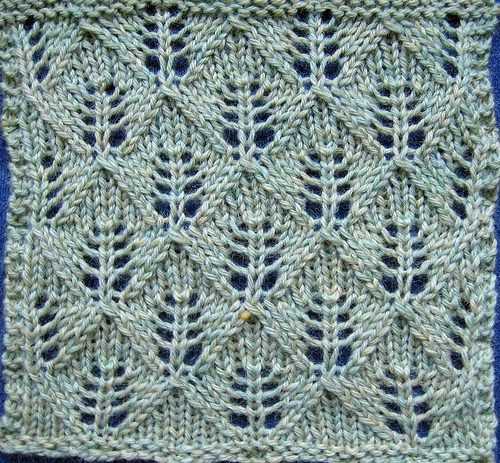
Have you ever marveled at the intricate beauty of Flemish block lace knitting patterns? These delicate and elegant designs can be a stunning addition to any knitting project, whether it’s a shawl, scarf, or even a sweater. In this step-by-step guide, we will walk you through the process of creating your own Flemish block lace pattern, so you can add a touch of timeless elegance to your knitting repertoire.
Before we dive into the knitting instructions, let’s take a moment to appreciate the history and significance of Flemish block lace. Originating in Flanders, a region known for its rich textile traditions, Flemish block lace is characterized by its geometric motifs and intricate grid-like structure. Traditionally, this lace was created using bobbins and a lace pillow, but with the advent of modern knitting techniques, it can now be replicated with knitting needles and yarn.
Materials Needed:

- Knitting needles (size appropriate for your chosen yarn)
- Yarn in the color of your choice
- Stitch markers
- Tapestry needle
Step 1: Choosing a Pattern
Start by selecting a Flemish block lace knitting pattern that catches your eye. There are countless patterns available online and in knitting books, so take your time to find one that suits your preferences. Pay attention to the level of difficulty indicated in the pattern, as some designs may be more intricate and require advanced skills.
Step 2: Casting On
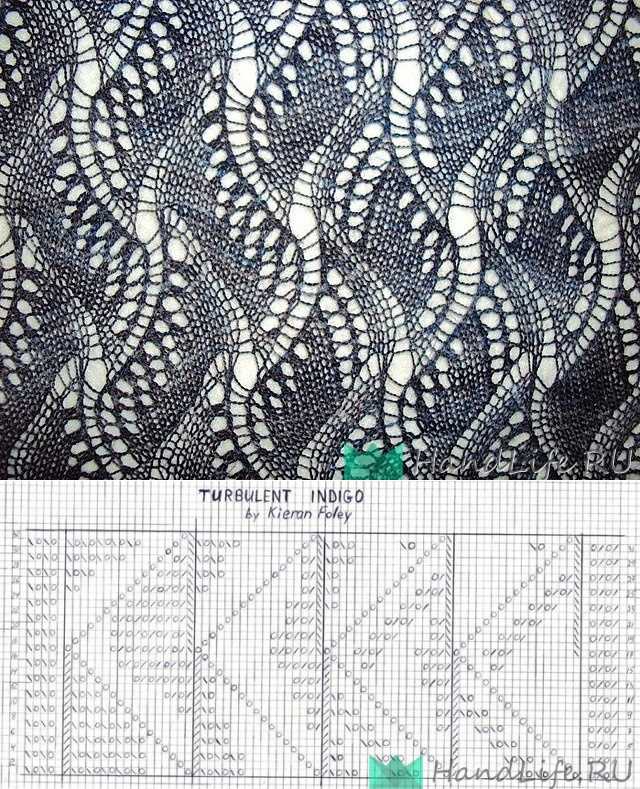
Once you have your pattern, it’s time to cast on. Follow the instructions provided in the pattern to cast on the required number of stitches. Make sure to keep your tension even to ensure a uniform and well-defined lace pattern.
Step 3: Following the Chart
Most Flemish block lace patterns are presented in the form of a chart, which maps out each stitch and row. Use stitch markers to help you keep track of the pattern repeats and any shaping instructions. Follow the chart row by row, paying close attention to the symbols and instructions provided.
Step 4: Blocking
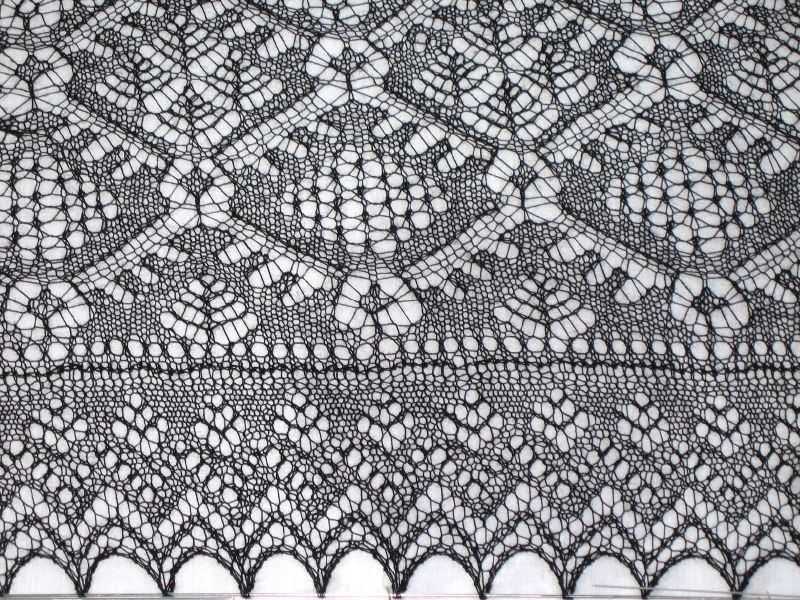
After finishing your lace knitting project, it’s important to block it to enhance the lace motifs and give them a polished look. Wet blocking is the most common method for blocking lace. Gently soak your finished piece in lukewarm water and lay it flat on a towel, then gently shape it to the desired dimensions. Allow it to dry completely before removing the pins or blocking wires.
With these step-by-step instructions, you’ll be able to create your own beautiful Flemish block lace knitting patterns. The timeless elegance of these designs will add a touch of sophistication to any knitting project, making it a true statement piece. So, grab your knitting needles and get ready to create stunning lace designs that will leave everyone in awe of your knitting skills.
Understanding the History and Significance of Flemish Block Lace
Flemish block lace knitting pattern, also known as Flemish lace or Flemish knitting, is a traditional lace technique that originated in Flanders, a region in present-day Belgium, during the 17th century. This intricate lacework was originally created by Flemish women as a means of adding decorative touches to clothing and household items.
One of the distinguishing features of Flemish block lace is its use of geometric patterns and motifs. The lace is created by knitting individual blocks or squares, which are then joined together to form a larger piece. The blocks are typically worked in a specific lace stitch pattern, such as the honeycomb stitch or the diamond stitch, resulting in a richly textured fabric.
Throughout history, Flemish block lace has held great significance and value. In the past, it was considered a symbol of wealth and social status, as it was often used to adorn the clothing of the nobility and upper classes. The intricate and time-consuming nature of the lacework made it a luxury item that was coveted by many.
Today, Flemish block lace continues to be appreciated for its beauty and craftsmanship. While it may no longer be as widely used as it once was, it is still cherished by those who appreciate the artistry and history behind it. Many knitters continue to create their own interpretations of Flemish block lace patterns, keeping this traditional technique alive for future generations to enjoy.
Choosing the Right Yarn and Needles for Flemish Block Lace
Flemish block lace is a beautiful knitting pattern that requires careful consideration when choosing the right yarn and needles. The intricate lacework and delicate details of this pattern mean that the materials used play a crucial role in the final result. Here are some factors to consider when selecting your yarn and needles.
Yarn Weight: The weight of the yarn you choose will have a significant impact on the overall look and feel of your Flemish block lace. Opt for a laceweight or fingering weight yarn to achieve the delicate and airy effect that is characteristic of this pattern. These yarn weights will create a light and dainty fabric that showcases the lacework beautifully.
Fiber Content: The fiber content of the yarn will also affect the outcome of your Flemish block lace. Natural fibers such as silk, alpaca, or merino wool are excellent choices for this pattern as they have a soft and smooth texture that will enhance the delicate nature of the lace. These fibers also have excellent drape, which is important for showcasing the intricate stitch patterns.
Needle Size: The needle size you use will determine the tension and drape of your Flemish block lace. For lacework, it is best to use small and lightweight needles to create tight and neat stitches. Lace needles, circular needles, or double-pointed needles in sizes ranging from US 0 to US 3 (2-3.25mm) are commonly used for this type of pattern. Experiment with different needle sizes to achieve the desired effect and ensure that your stitches are even and defined.
Gauge: When knitting Flemish block lace, achieving the correct gauge is essential for the final result to match the pattern’s measurements and proportions. Always knit a gauge swatch before starting your project to ensure that you are using the right needle size and yarn weight. Adjust your needle size as needed to achieve the proper gauge and ensure that your lacework is consistent throughout.
By carefully selecting the right yarn weight, fiber content, needle size, and achieving the correct gauge, you can create stunning Flemish block lace projects that showcase the intricate beauty of this pattern. Take your time to explore different options and experiment with different materials to find the perfect combination that brings your vision to life.
Getting Started: Casting On and Knitting the Foundation Rows
Before you can begin knitting the Flemish block lace pattern, you’ll need to cast on and knit the foundation rows. These initial steps are crucial for setting up the pattern and ensuring that your lacework turns out correctly.
Casting On: To cast on for the Flemish block lace pattern, you can use any method that you’re comfortable with. However, it’s important to use a method that creates a firm and even edge. A long-tail cast on or a cable cast on are often good choices for this type of lacework. Make sure to cast on the number of stitches indicated in the pattern instructions.
Knitting the Foundation Rows: Once you have cast on, it’s time to start knitting the foundation rows. These rows will create the base of your lace pattern and establish the stitch pattern that you’ll be following throughout. The foundation rows may involve simple knit and purl stitches or more intricate lace stitches, depending on the specific pattern you’re working on. Follow the pattern instructions carefully, and be sure to count your stitches after each row to ensure that you haven’t made any mistakes.
As you work through the foundation rows, it’s important to maintain an even tension in your knitting. Tension refers to how tightly or loosely you hold your yarn as you knit, and it can greatly affect the appearance and drape of your finished lacework. If your tension is too tight, your lace pattern may look bunched up and stiff. On the other hand, if your tension is too loose, your lace pattern may look loose and open. Take the time to practice and find a tension that works for you.
By taking care to properly cast on and knit the foundation rows, you’ll be setting yourself up for success as you move on to the main part of the Flemish block lace knitting pattern. These initial steps may seem simple, but they are essential for creating a beautiful and well-executed lacework piece.
Mastering the Basic Lace Stitches
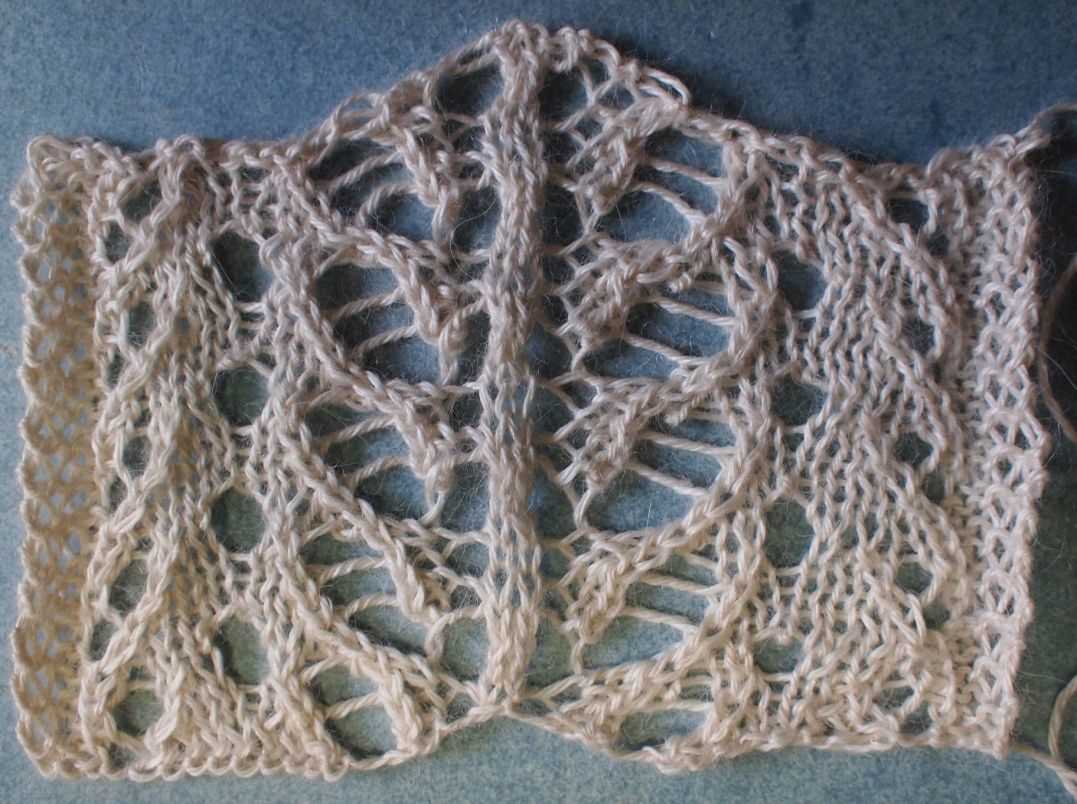
If you are interested in creating beautiful lace knitting patterns, it is essential to master the basic lace stitches. These stitches are the building blocks of lace knitting and can be combined in various ways to create intricate and delicate designs. Whether you are a beginner or an experienced knitter, learning and practicing the basic lace stitches will enhance your knitting skills and open up a world of possibilities.
Yarn Over (YO): The yarn over is one of the fundamental lace stitches. It involves wrapping the working yarn around the needle to create an extra stitch. YOs are used to create eyelets and decorative holes in lace patterns. To make a yarn over, simply bring the yarn to the front or back, depending on the pattern, and then continue knitting or purling as instructed.
Knit Two Together (K2tog): The knit two together stitch is another essential lace stitch. It is used to decrease stitches and create a slanting decrease in lace patterns. To knit two together, insert the right needle into the next two stitches on the left needle as if to knit, and then knit them together as one stitch.
Slip, Knit, Pass (SKP): The slip, knit, pass stitch is a left-slanting decrease commonly used in lace knitting. To work an SKP, slip the next stitch as if to knit onto the right needle, knit the following stitch, and then pass the slipped stitch over the knitted stitch and off the needle.
By practicing and mastering these basic lace stitches, you will gain the skills and confidence to tackle more complex lace knitting patterns. Remember to always follow the pattern instructions carefully and pay attention to stitch counts and yarn overs to achieve stunning lace designs. Experiment with different combinations of the basic stitches and explore the world of lace knitting.
Creating the Flemish Block Lace Pattern: Following the Chart
The Flemish Block Lace knitting pattern is a beautiful and intricate design that can be created by following a chart. The chart provides a visual representation of the pattern, with each symbol representing a specific stitch. By following the chart and knitting the corresponding stitches, you can create the stunning lace pattern.
To start knitting the Flemish Block Lace pattern, you will need to identify the different symbols used in the chart. Each symbol represents a specific stitch, such as a knit stitch, purl stitch, yarn over, or decrease. The chart will also indicate the number of stitches that need to be worked in each row, helping you keep track of your progress.
Understanding the Symbols
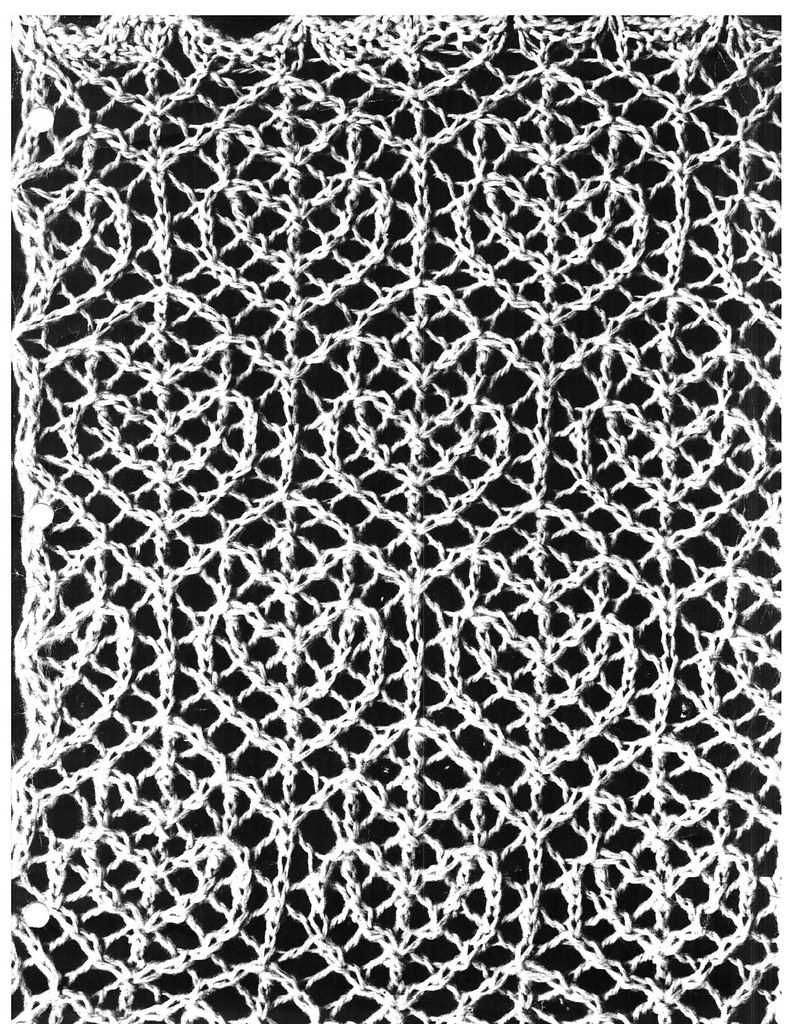
In the Flemish Block Lace chart, common symbols include:
- O – represents a yarn over, where the yarn is moved from the front to the back of the work, creating an extra stitch
- or / – represents a decrease, where two stitches are worked together to create one stitch
- K – represents a knit stitch
- P – represents a purl stitch
By becoming familiar with these symbols, you will be able to easily follow the chart and create the Flemish Block Lace pattern. It is recommended to have a key or legend nearby for reference, especially if you are new to knitting lace patterns.
Following the Chart
When following the Flemish Block Lace chart, it is important to read from right to left for right-side rows and from left to right for wrong-side rows. Start by locating the first symbol in the chart and work the corresponding stitch. Then, move on to the next symbol and continue in this manner until you reach the end of the row.
Repeat this process for each row, ensuring that you are following the chart correctly and working the correct number of stitches. Double-checking your work after each row can help catch any mistakes early on and prevent the need for extensive unraveling.
With practice, you will become more comfortable with reading and following charted lace patterns like the Flemish Block Lace. It may take time and patience, but the end result will be a beautiful knitted lace piece that showcases your skills and artistry.
Adding Depth and Texture with Decreases and Increases
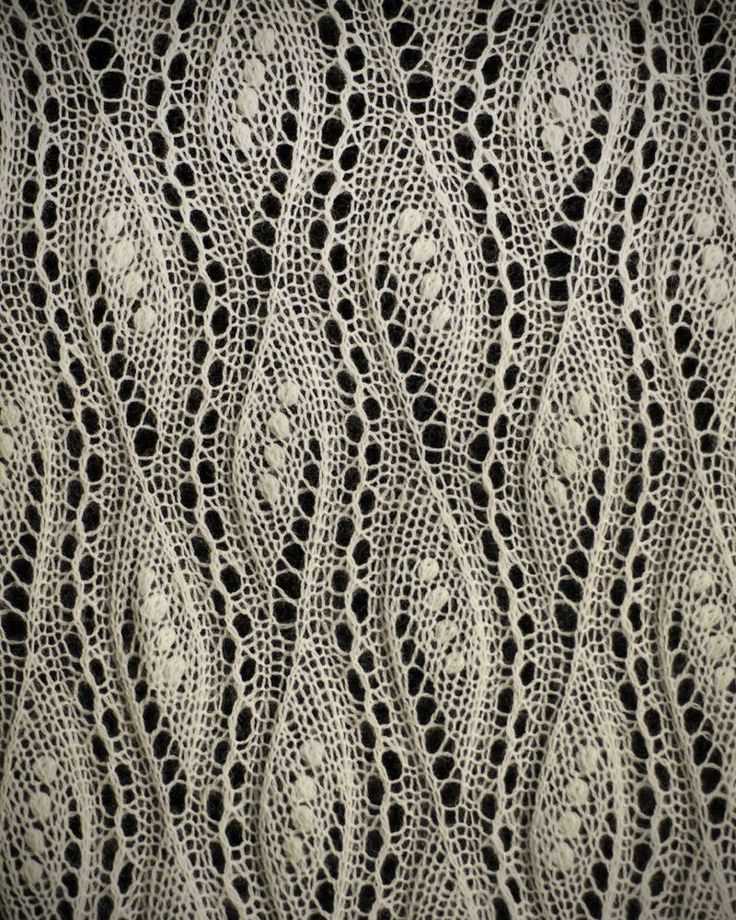
Knitting patterns often rely on a combination of decreases and increases to add depth and texture to the finished project. Decreases are used to reduce the number of stitches in a row or round, creating shaping for garments or decorative effects. Common decrease stitches include knit two together (k2tog), slip slip knit (ssk), and centered double decrease (cdd). These stitches can be strategically placed to create shaping and interesting patterns.
Increases, on the other hand, are used to add stitches to a row or round, expanding the fabric and creating new elements. The most common increase stitches include yarn over (yo), knit front and back (kfb), and make one (m1). By strategically placing increases, knitters can create decorative features such as lace, cables, and textured patterns. Different combinations of increases and decreases can also be used to create unique stitch patterns.
- Decreases: Decreases are used to shape the fabric, create curves, and give structure to the knitting. By working decreases at specific points in a row or round, knitters can adjust the width of the project and create tailored garments or intricate lace patterns.
- Increases: Increases are used to expand the fabric, add stitches, and create decorative effects. By working increases in specific locations, knitters can create eye-catching lace motifs, intricate cable designs, or textured stitch patterns.
- Combining Decreases and Increases: By using a combination of decreases and increases, knitters can create complex stitch patterns that add depth and texture to their knitting. These combinations can be used to mimic natural textures, such as leaves or waves, or create intricate geometric designs.
In Flemish block lace knitting patterns, decreases and increases are often used to create intricate motifs and patterns. These patterns typically involve working various combinations of k2tog, ssk, yo, and m1 stitches to create stunning lace designs. The careful placement of these stitches adds depth and texture to the lace fabric, resulting in an elegant finished piece.
Whether you’re knitting a garment, a shawl, or a simple scarf, mastering the art of decreases and increases will allow you to add depth and texture to your knitting projects. Understanding how to strategically use these stitches will unlock a world of possibilities for creating unique and beautiful knitted items.
Playing with Color: Incorporating Multiple Yarns in your Flemish Block Lace
One of the most exciting aspects of creating a Flemish Block Lace knitting pattern is the opportunity to play with color and incorporate multiple yarns. By using different yarns in various colors, you can add depth, texture, and visual interest to your lacework. Here are some tips and ideas for incorporating multiple yarns in your Flemish Block Lace project.
1. Color blocking:
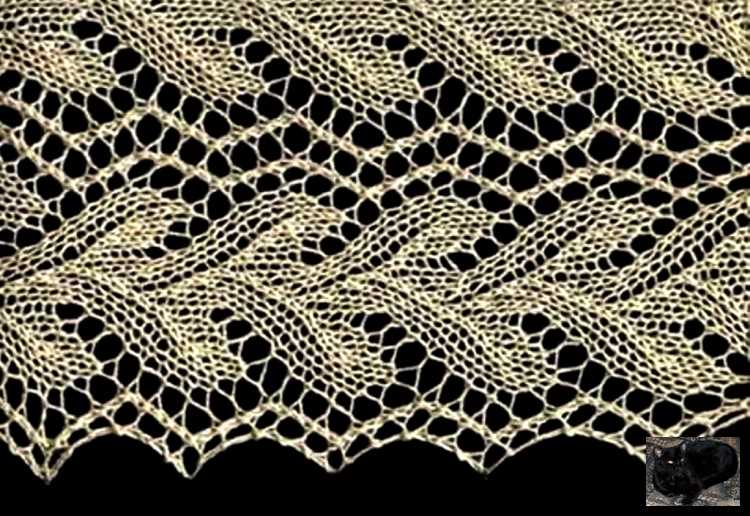
Color blocking is a popular technique in fashion and design, and it can be applied to your lace knitting as well. Select a combination of contrasting or complementary colors to create distinct blocks of color within your lace pattern. This can be done by alternating different yarns in different stitches or rows. By strategically placing different colors, you can create a stunning visual effect that highlights the intricate lacework.
2. Gradient effect:
If you’re looking to achieve a subtle transition of colors in your lace knitting, consider using a gradient yarn. Gradient yarns typically come in a skein or cake with a gradual transition from one color to another. By using this type of yarn, you can achieve a beautiful ombre effect in your lace pattern. Start with one color and let it gradually transition to another, creating a soft and visually appealing gradient.
3. Stranded colorwork:
For a more intricate and complex look, you can incorporate stranded colorwork into your Flemish Block Lace pattern. Stranded colorwork involves knitting with two or more colors at the same time, creating a pattern with contrasting colors. You can introduce additional yarns for the colorwork sections, using them to create eye-catching motifs or designs within the lace pattern.
Overall, incorporating multiple yarns in your Flemish Block Lace project allows you to unleash your creativity and add unique flair to your knitting. Experiment with different color combinations, techniques, and yarn weights to create a lacework masterpiece that truly stands out.
Fixing Common Mistakes and Troubleshooting in Flemish Block Lace Knitting
If you are new to Flemish Block Lace knitting, it is common to make mistakes along the way. However, with a little patience and some troubleshooting, you can easily fix these errors and continue with your project. Here are some common mistakes and how to address them:
Mistake: Dropped Stitches
One of the most common mistakes in lace knitting is dropping stitches. If you notice a dropped stitch, do not panic. Take a crochet hook or a spare knitting needle and use it to pick up the dropped stitch. Insert the hook or needle into the stitch below the dropped stitch and bring it up through the loop. Then, place the stitch back on the needle and continue knitting as usual.
Mistake: Uneven Tension
If you find that your tension is uneven in your Flemish Block Lace knitting, there are a few things you can try to fix it. First, take a break and stretch your hands and wrists to relax any tension you may be holding. Next, pay attention to your knitting technique and try to maintain a consistent tension throughout your work. If necessary, you can also try using a different needle size to adjust the tension. Remember, practice makes perfect, so don’t get discouraged if your tension is not perfect right away.
Remember, no matter what mistakes you encounter in your Flemish Block Lace knitting, it is important to remain patient and not get discouraged. Mistakes are a part of the learning process, and with practice, you will become more skilled at fixing them. Don’t be afraid to ask for help or seek guidance from fellow knitters or online knitting communities. Happy knitting!
Blocking and Finishing your Flemish Block Lace Project
Once you have completed knitting your Flemish block lace project, it is important to block and finish it to enhance its appearance and ensure the stitches lay flat. Blocking is the process of wetting or steaming the finished project to relax the fibers and adjust the shape. Here are some steps to help you block and finish your Flemish block lace project:
1. Soak your project
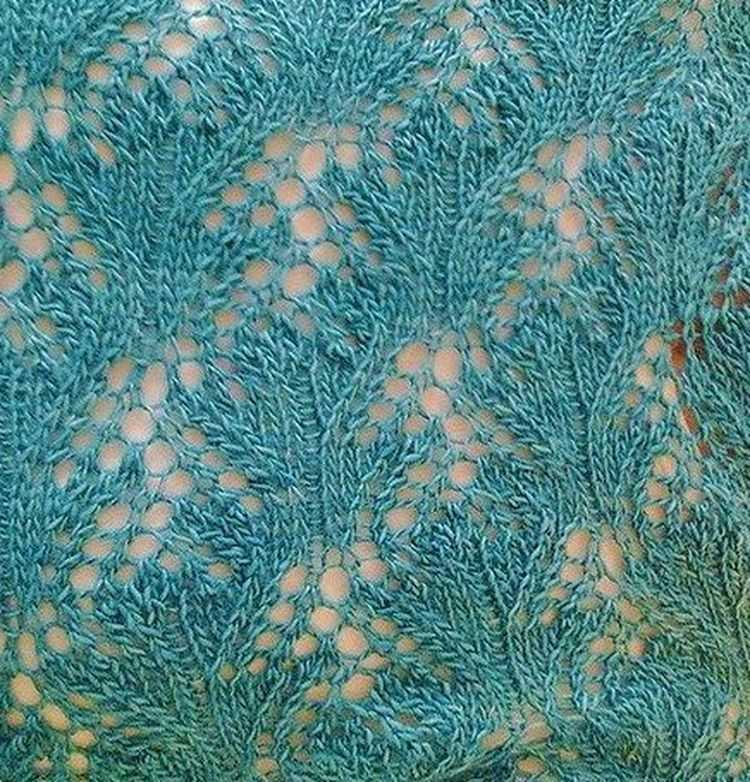
Fill a basin or sink with lukewarm water and add a small amount of mild soap or wool wash. Immerse your lace project in the water, gently pressing it down to make sure it is fully saturated. Allow the project to soak for about 15 minutes.
2. Remove excess water
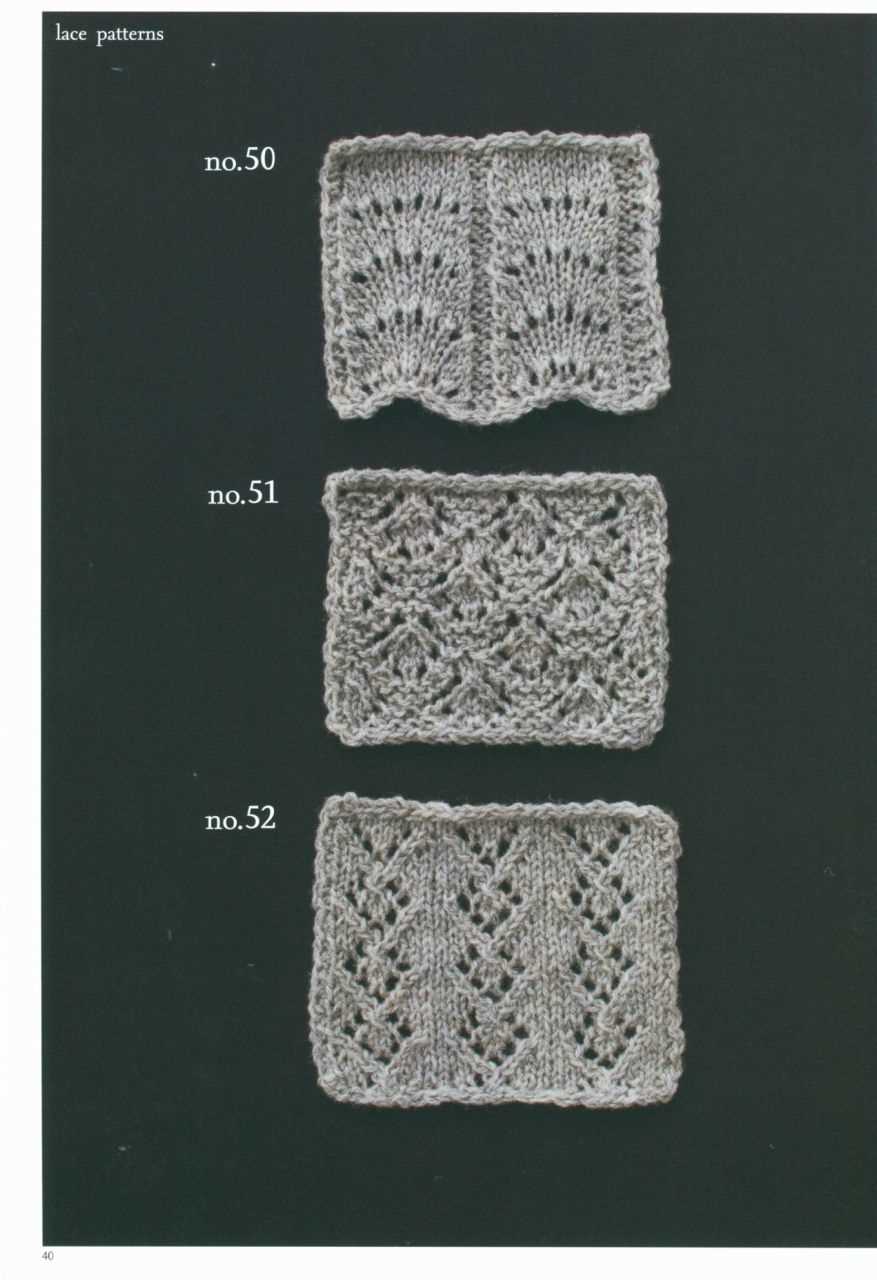
After soaking, gently squeeze out the excess water from your project. Do not wring or twist the lace as this can damage the fibers and distort the stitches.
3. Block the lace
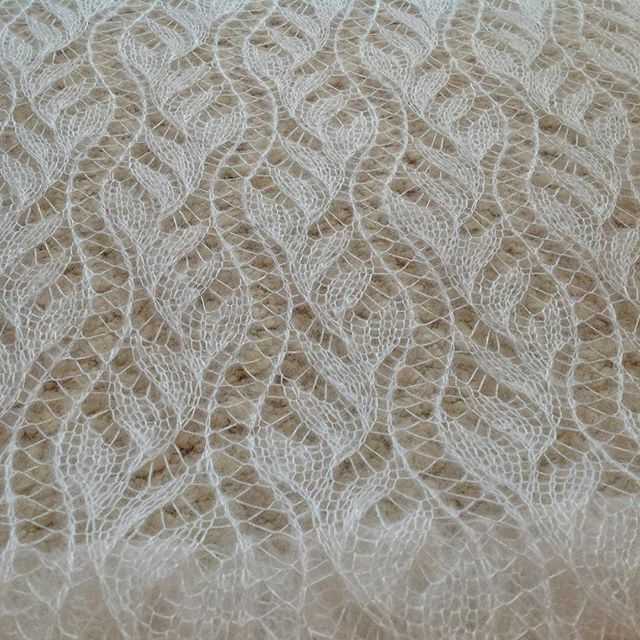
For Flemish block lace, the most common method of blocking is pinning. Lay your project out on a clean, dry towel or blocking mat. Use rustproof blocking pins to pin the project into shape, following the lace pattern and ensuring that the edges are straight and even. Stretch the lace gently to open up the stitches.
4. Let it dry
Leave your project to dry completely in a well-ventilated area, away from direct sunlight or heat sources. This can take a few days, depending on the size and thickness of the project.
5. Finishing touches
After your lace project has dried, carefully remove the blocking pins and admire your beautifully blocked Flemish block lace. If desired, you can gently steam your project using a steam iron to further set the shape and enhance the lace’s definition. Be sure to use a gentle heat and hold the iron a couple of inches above the lace, avoiding direct contact.
By following these steps, you can achieve a professional-looking finish for your Flemish block lace project. Blocking not only enhances the appearance of the lace, but also helps the stitches to lie flat, giving your project a polished and refined look.
Exploring Advanced Techniques and Variations in Flemish Block Lace
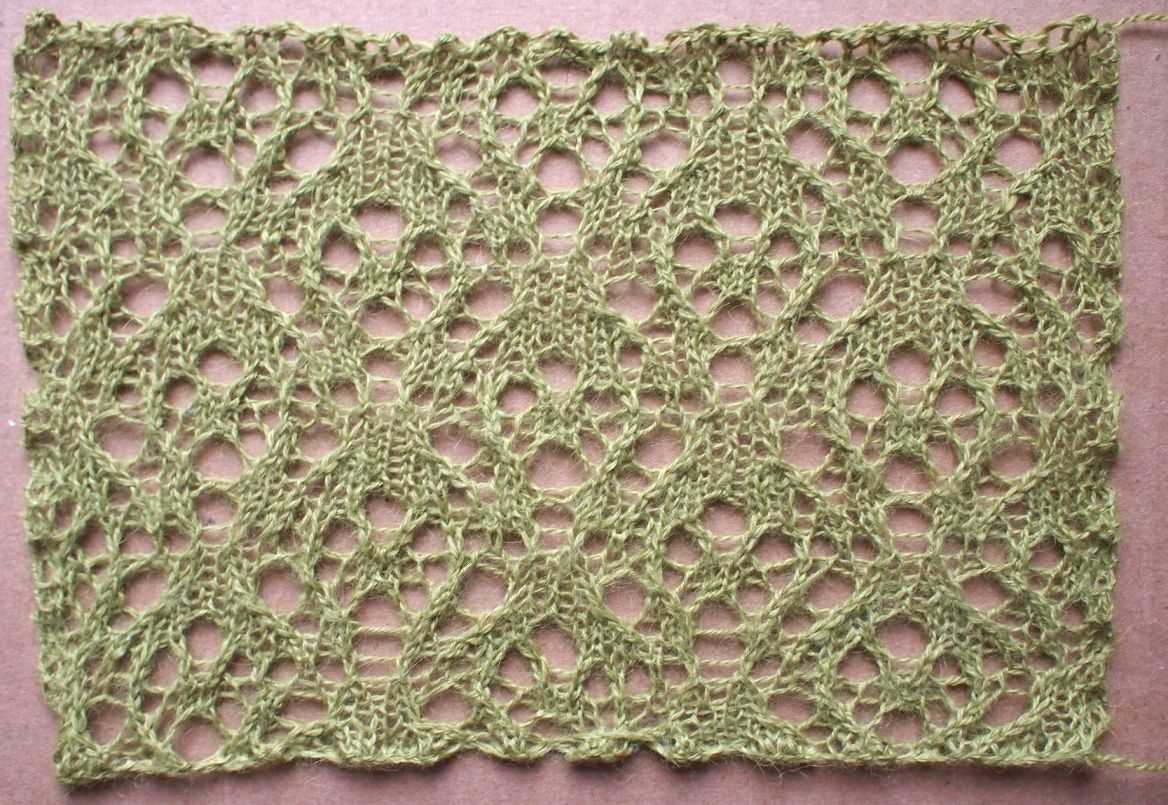
Flemish block lace knitting is a traditional technique that originated in Belgium. It is characterized by intricate geometric patterns, created by a combination of lace stitches and clever placement of increases and decreases. While the basic technique involves knitting a pattern of blocks, there are many advanced techniques and variations that can be explored to add complexity and interest to your lace projects.
One advanced technique in Flemish block lace knitting is the use of twisted stitches. By knitting or purling through the back loop, you create a twisted stitch that adds texture and depth to your lace pattern. This technique can be used to highlight certain areas of the design or create a more intricate overall pattern.
The use of color
In addition to using different stitches and techniques, you can also explore the use of color in Flemish block lace knitting. By incorporating multiple colors into your lace pattern, you can create stunning visual effects and further enhance the complexity of the design.
Experimenting with stitch combinations
Twisted stitches, eyelets, and nupps
Another way to explore advanced techniques in Flemish block lace knitting is by experimenting with different stitch combinations. You can combine twisted stitches with eyelets or nupps to create unique textures and visual interest. Nupps, in particular, are small bobbles that are added to the pattern by working multiple stitches into a single stitch. They can add a three-dimensional look to your lace and make it stand out.
By exploring these advanced techniques and variations in Flemish block lace knitting, you can take your lace projects to the next level. Whether you choose to incorporate twisted stitches, experiment with color, or try different stitch combinations, you are sure to create beautiful and intricate lace patterns that will impress others and showcase your knitting skills.
Inspiration and Resources for Flemish Block Lace Knitting Patterns
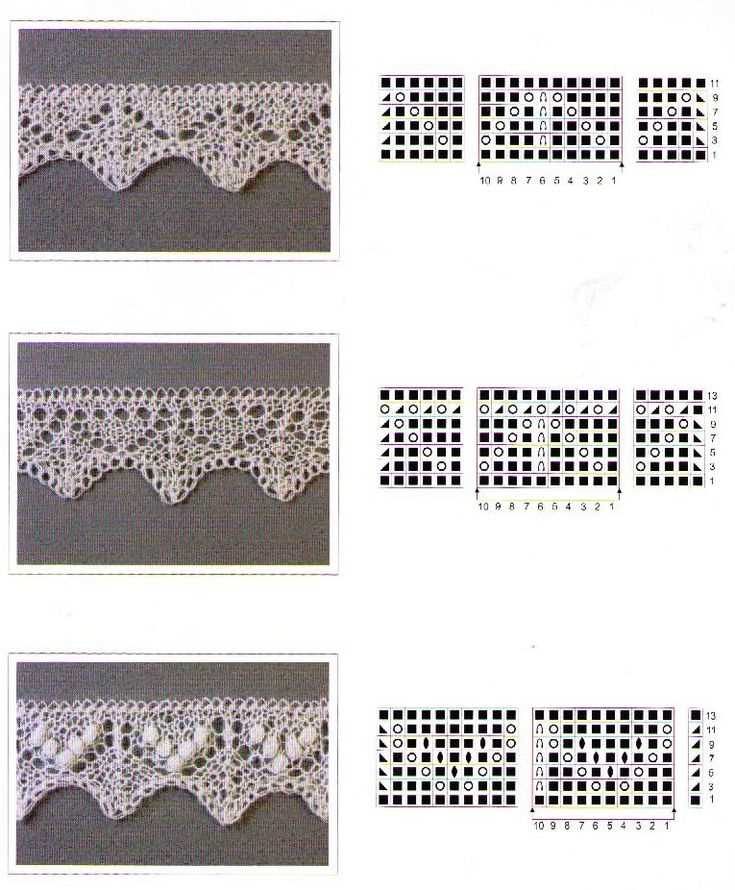
Block lace knitting patterns have a rich history in Flemish textile tradition, and they continue to inspire and captivate knitters today. Whether you’re a beginner looking to try out this intricate and elegant technique, or an experienced lace knitter seeking new patterns and resources, there are plenty of sources to draw inspiration from.
One of the best ways to find inspiration for Flemish block lace knitting patterns is by studying historical lace pieces. Museums and online archives often have extensive collections of lace samples and garments that can offer insights into the techniques and designs used in the past. This can help you understand the traditional motifs and patterns that have been passed down through generations, and give you ideas for incorporating them into your own work.
Additionally, there are numerous books and publications dedicated to Flemish lace knitting. These resources can provide detailed instructions, charts, and patterns for creating your own block lace pieces. Some recommended titles include “Lace from Bruges” by Saskia Terwelle and “Flanders Lace: A Step-by-Step Guide” by Jennifer Johnston. These books offer a wealth of information, as well as beautiful illustrations and photographs to inspire your knitting projects.
The internet is also a valuable resource for finding Flemish block lace knitting patterns. Many knitting websites and forums have dedicated sections for lace knitting, where you can find free patterns, tutorials, and discussions with fellow lace enthusiasts. Websites like Ravelry and Knitting Pattern Central offer a vast collection of lace patterns, including ones inspired by Flemish block lace.
If you prefer video tutorials, YouTube is a fantastic source for learning block lace knitting techniques. There are many talented knitters who share their skills and expertise through step-by-step video instructions. Watching and following along with these tutorials can be immensely helpful, especially if you’re new to lace knitting or need visual guidance.
To delve deeper into the world of Flemish block lace knitting, consider joining a knitting group or taking a workshop. Local knitting stores and community centers often host classes and events where you can learn from experienced lace knitters and connect with fellow enthusiasts. This can be a wonderful way to exchange ideas, get feedback on your work, and discover new patterns and resources.
Summary:
Flemish block lace knitting patterns offer a captivating blend of tradition and artistry. By exploring historical pieces, consulting books and publications, browsing online resources, and participating in knitting communities, you can find an abundance of inspiration and resources to enhance your knowledge and skills in this beautiful craft. Whether you’re a beginner or an expert, there are endless possibilities for creating stunning Flemish block lace knitting projects.